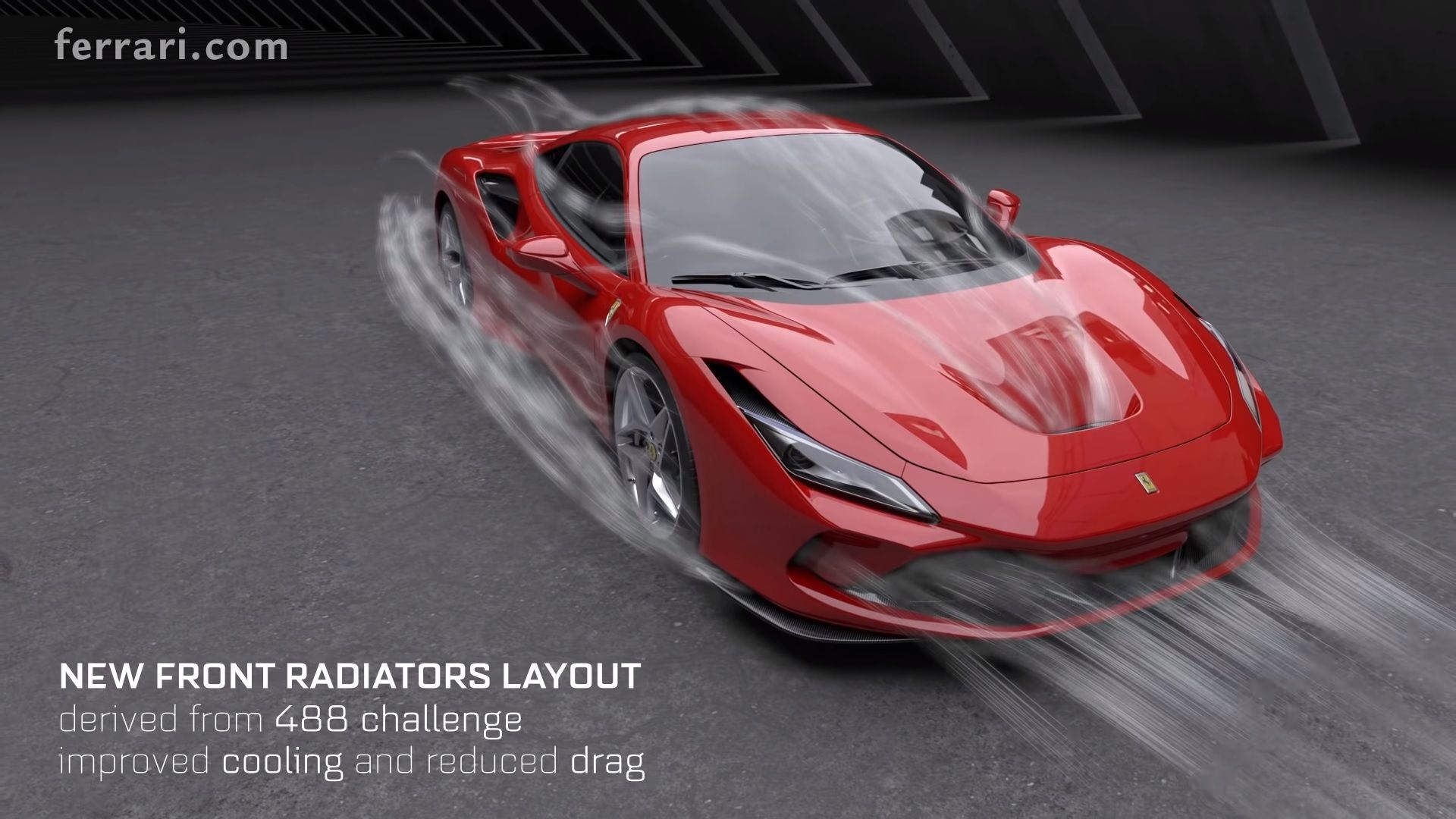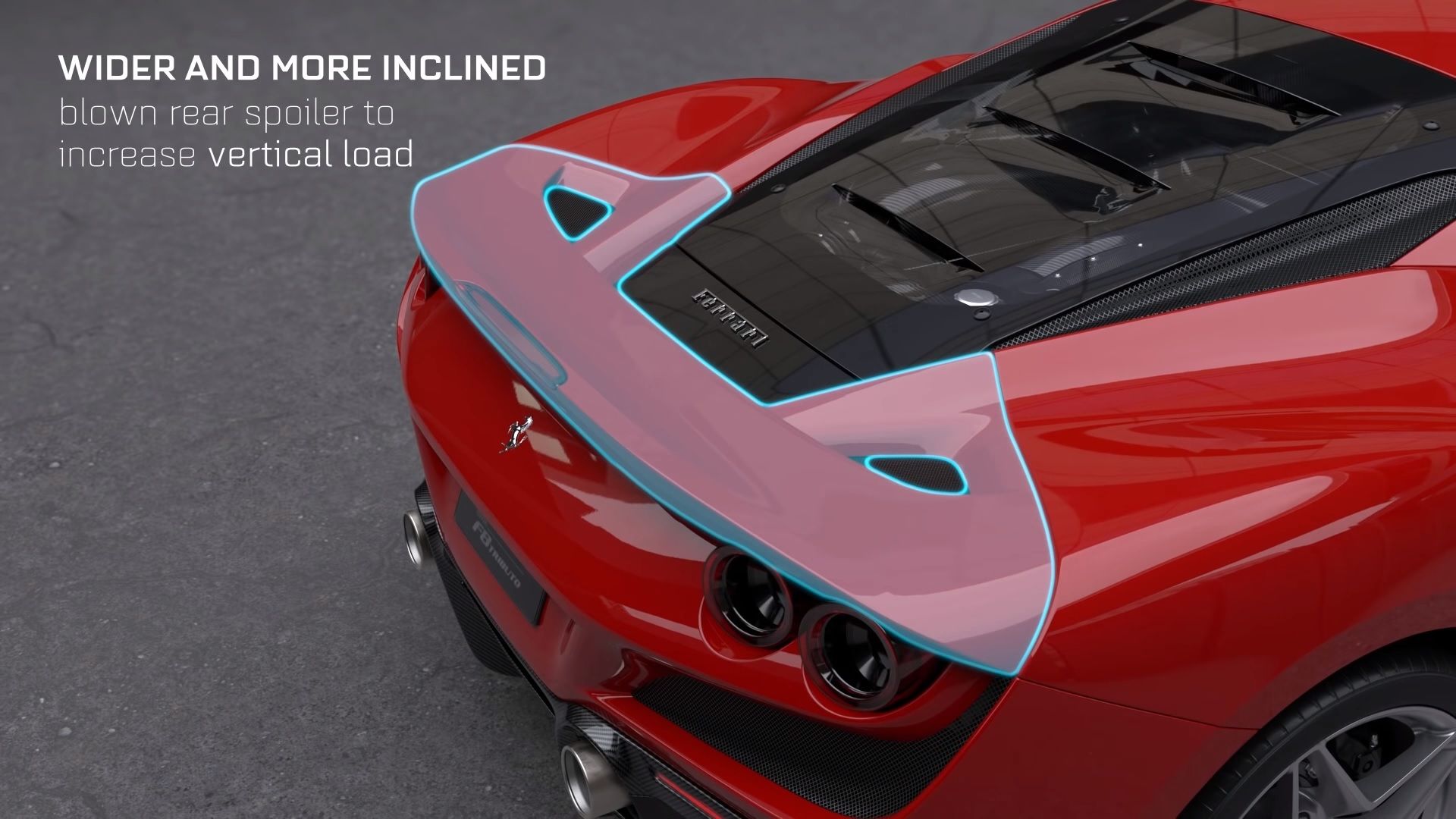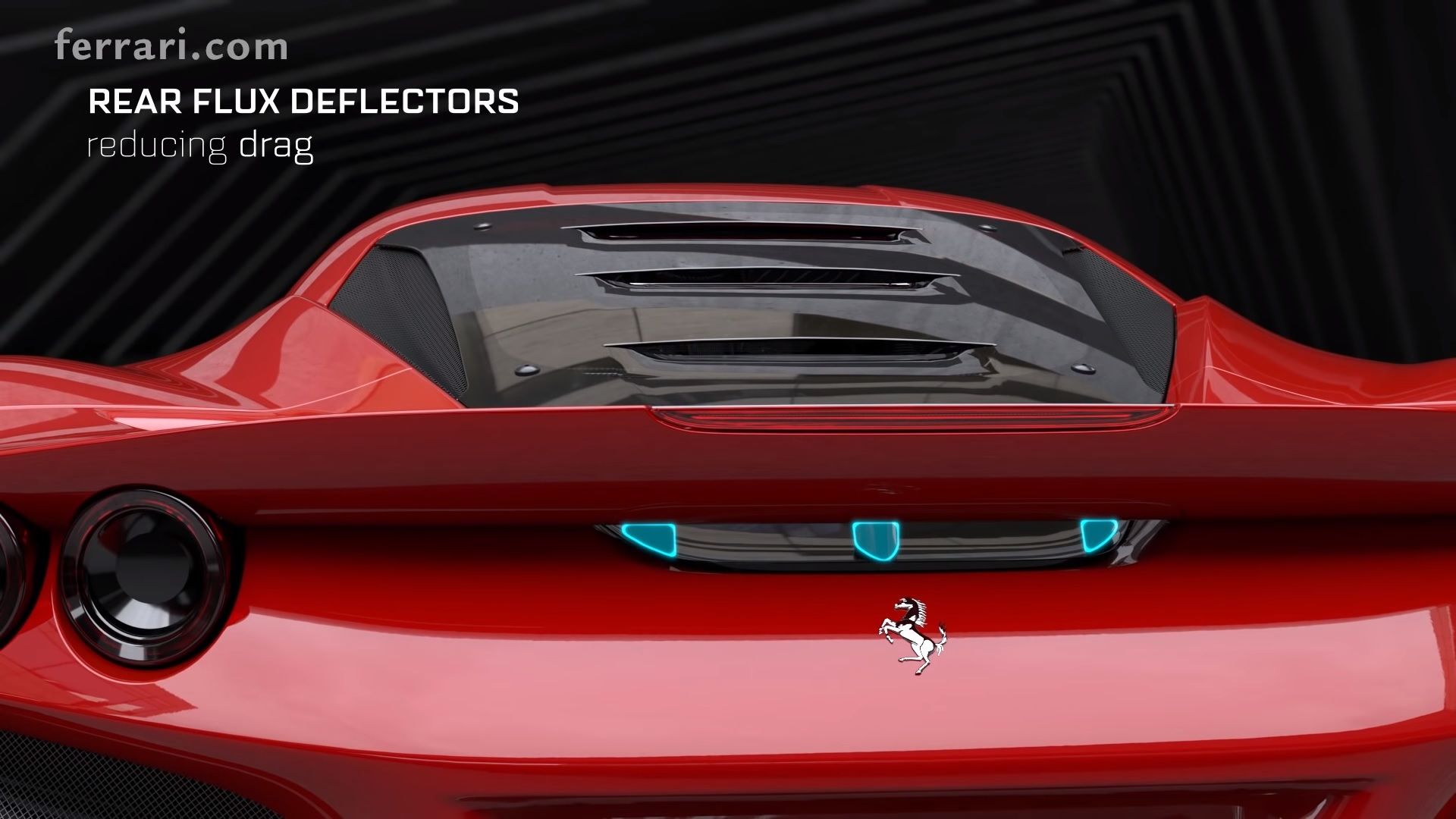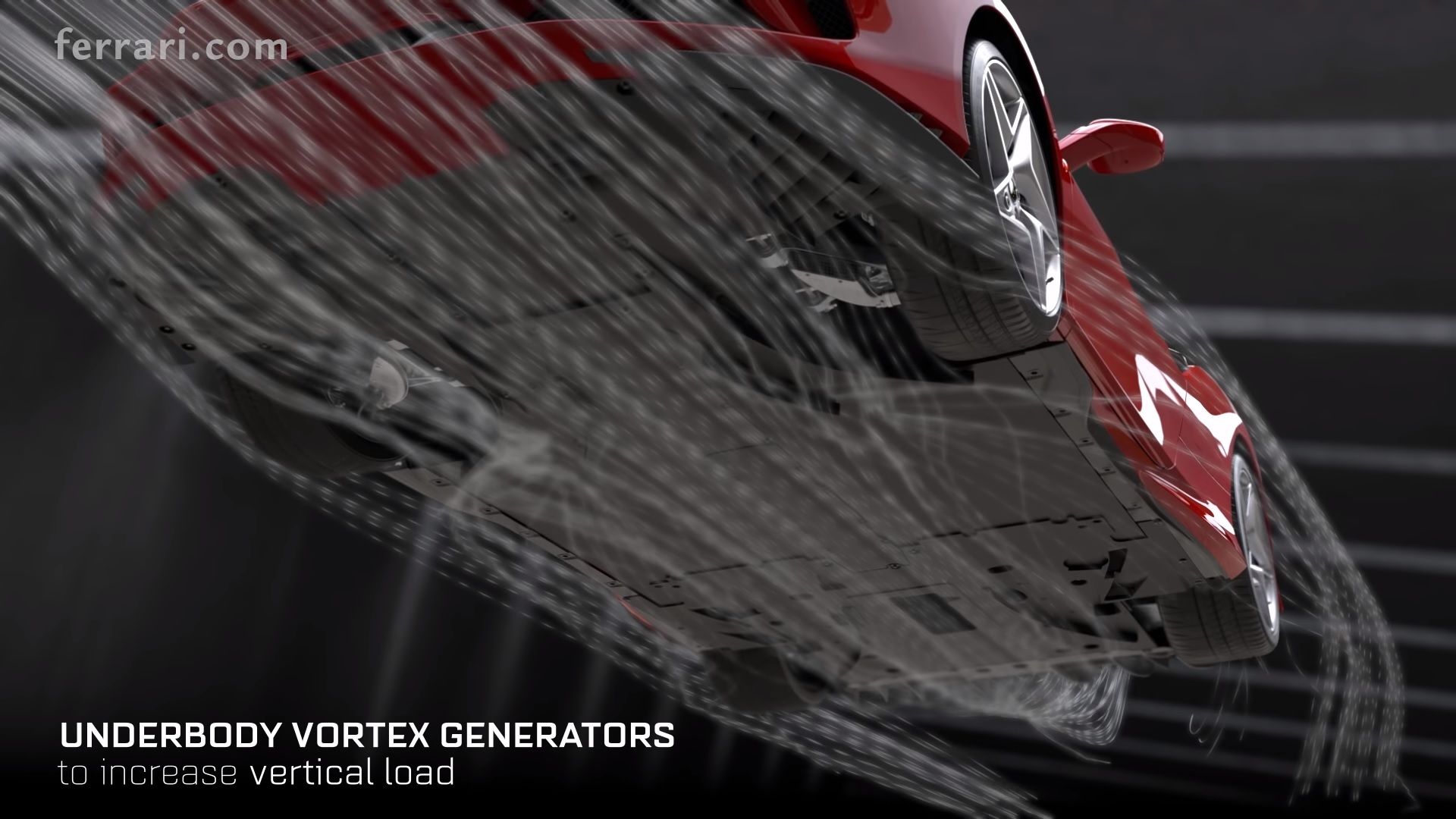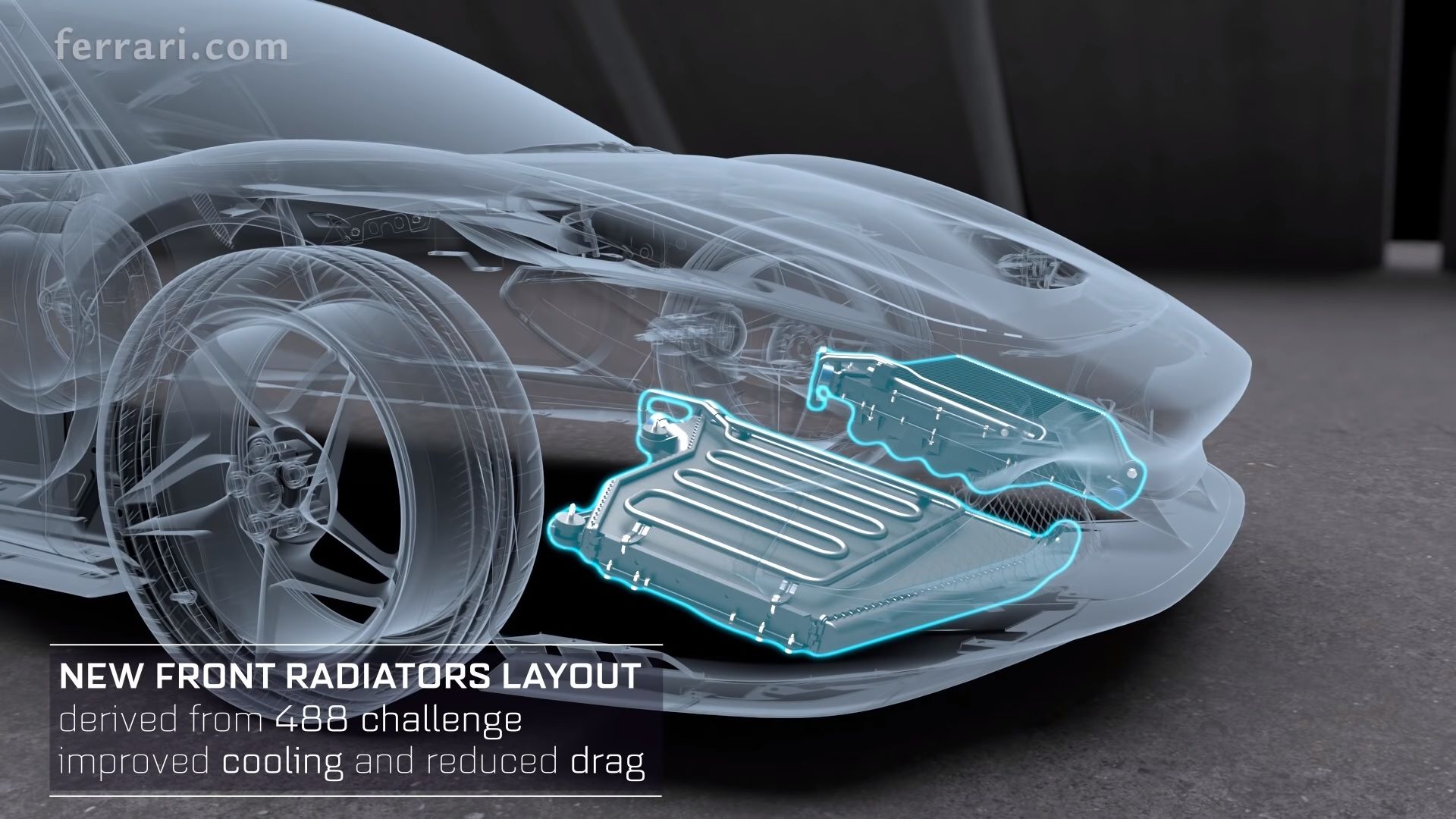You can say what you want about the Ferrari F8 Tributo: that it's not genuinely a brand-new car, that it doesn't offer mild hybridization options given the grandfathered platform or that it looks too much like the 488 Pista. However, you can't say that Ferrari didn't go the extra mile when it comes to aerodynamics. In short, the F8 Tributo is a moving field day for the wind.
The Ferrari F8 Tributo was Ferrari's surprise for the 89th edition of the Geneva Auto Show. It's the successor of the impressive Ferrari 488 and, in pure Ferrari tradition, it promises to obliterate its elder peer. The 4.0-liter V-8 engine is shared with the 488 Pista, and it puts out 710 horsepower and 568 pound-feet of torque. The F8 Tributo is lighter than a standard 488 but slightly heavier than the Pista and slightly slower than a McLaren 720S. With this being said, it still goes from 0 to 62 mph in 2.9 seconds on its way to a top speed of 211 mph, and it is an absolute monster in the corners. How? Thanks to all of those winglets, fins, and creases in the body.
The 2020 Ferrari F8 Tributo is Quite a Looker, but Purpose Goes Beyond All Else
The Ferrari F8 Tributo is a tribute to, most probably, the pioneer of thoroughly developed aerodynamics in Ferrari's yard, the mythical F40, work of Nicola Materazzi. As such, Ferrari couldn't have turned out with anything other than a very aero-efficient machine in the F8 Tributo. It sports a flat underbelly, active elements front and rear, an elaborate splitter architecture, tunnels and vents and, last but not least, a generous diffuser. Its aerodynamic insanity will soon be superseded by a 'Pista' or 'Challenge' or 'Scuderia' or whatever Ferrari will choose to name the stiffened-up version of the 488's replacement. But, until the track-oriented model pops up, let's take a closer look at the design of the F8 Tributo looking for all the aerodynamic appendages.
In the rear, the wing's trailing edge curls upwards to make use of the upwashing effect of the air that goes below the wing, and this increases vertical loads. The wing itself is supported in the middle by no less than three struts that are probably shaped in such a way as to aid airflow under the wing.
As mentioned, the bottom of the car is flat apart from the area around the front end and the rear end. In the front, you've got the splitter designed to channel air through the brake ducts on either side to cool down the F8 Tributo's giant brakes.
Towards the back, there's the diffuser which features three main fins on either side. The area in the middle and the underbelly goes up, throwing the air out. Obviously, the wing and the diffuser work in tandem to offer more downforce or, if needed for high-speed runs, less drag.
What is more, the position of the radiators was altered to help aerodynamicists to modify the shape of the nose and make it more efficient. Also, the charge intercoolers have been enlarged enough to drop intake air temperatures by 15 degrees which is necessary since the F8 Tributo churns out 50 more horsepower than a standard 488 (660 horsepower versus 710 horsepower). Overall, the F8 is 10% more efficient than the non-Pista 488 and can be seen as more of a natural evolution of the body kit seen on the 488 Pista than a whole new model. Expect the track-focused version to bring more of the same but with some improvements in terms of packing, airflow management, and downforce.
The twin-turbocharged V-8, though, is the heart of the F8 Tributo. It puts out 710 horsepower at 8,000 rpm and 568 pound-feet of torque at 3,500 rpm. These are very similar numbers to the ones of the 488 Pista because the engine is almost identical.
Looking back at the 488 Pista, you'll see many of the aerodynamic tidbits applied to the F8 Tributo. The S-duct is there with its incorporated dive planes, and the same goes for the air vents in the rear fenders that direct air to the intercoolers as the 488 Pista's intakes are in the back, like on the McLaren 720S; The intake plenum is closer to the engine block as a result. Also, the diffuser with its fins and flaps are active to offer either increased downforce or reduced drag.
Talking about the 488 Pista, Michael Leiters told Road & Track that "apart from performance, driving emotion is important to us. For us, emotion in driving comes from sound, perceived acceleration- not 0-100 , but perceived acceleration and deceleration - and a go-kart feeling." I reckon the 488 is built to fulfill a similar ethos if maybe toned down a bit as this is a bit more of a tourer in nature than the dedicated performer that is the Pista.
2020 Ferrari F8 Tributo drivetrain specifications
Further reading
Read our full review on the 2020 Ferrari F8 Tributo
Read our full review on the 2016 Ferrari 488 GTB.
Read our full review on the 2016 Ferrari 488 Spider.
Read our full review on the 2018 Ferrari 488 Pista.
Read our full review on the 2019 Ferrari 488 Pista Spider.

